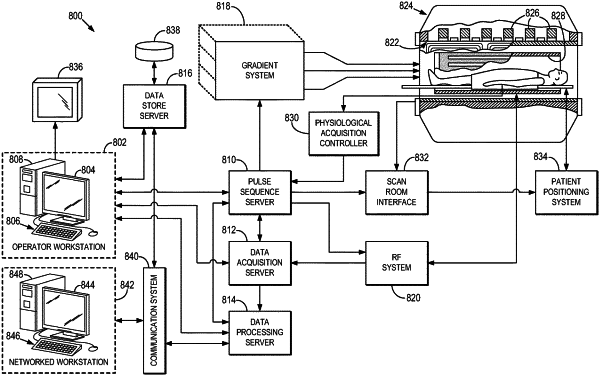| CPC G01R 33/50 (2013.01) [A61B 5/055 (2013.01); G01R 33/32 (2013.01); G01R 33/385 (2013.01); G06N 3/08 (2013.01)] | 14 Claims |

|
1. A method for generating T1, T2, and T2* parameter maps from data acquired with a magnetic resonance imaging (MRI) system, the method comprising:
(a) acquiring magnetic resonance data from a subject by operating an MRI system to acquire the magnetic resonance data in a series of variable sequence blocks to cause one or more resonant species in the subject to simultaneously produce individual magnetic resonance signals,
wherein at least one member of the series of variable sequence blocks differs from at least one other member of the series of variable sequence blocks in at least one sequence block parameter,
wherein the series of sequence blocks includes a first segment comprising a first plurality of variable sequence blocks in which data are acquired by sampling gradient echoes and a second segment comprising a second plurality of variable sequence blocks in which data are acquired by sampling spin echoes;
wherein the magnetic resonance data comprises first magnetic resonance data acquired during the first segment and second magnetic resonance data acquired during the second segment;
(b) generating a first series of parameter maps by estimating T1 and T2* values with a computer system by comparing the first magnetic resonance data to a dictionary of signal evolutions, the first series of parameter maps depicting spatial distributions of T1 and T2* values; and
(c) generating a second series of parameter maps by estimating T2 values with the computer system by comparing the second magnetic resonance data to the dictionary of signal evolutions while constraining T1 values with those estimated in step (b), wherein the second series of parameter maps depict spatial distributions of T2 values.
|